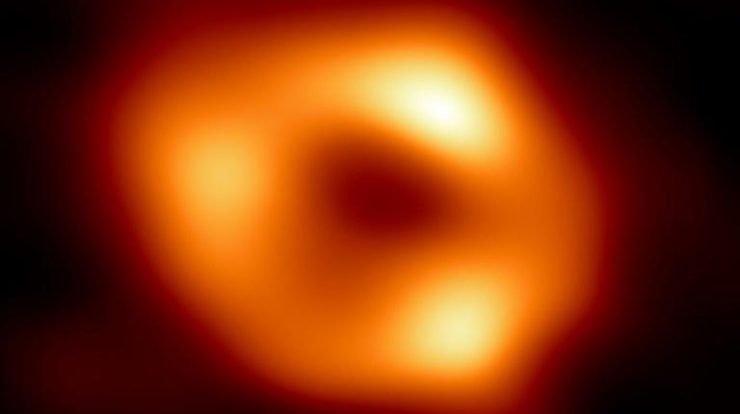
An international team of astronomers announced Thursday (12) that they were able to capture a picture of the supermassive black hole in the center of the Milky Way, three years after obtaining a similar image in the galaxy M87.
The collaboration, a project known as the EHT (Event Horizon Telescope), has presented at several simultaneous press conferences the “silhouette” of a black hole called Saggitarius A* in a luminous disk of matter.
This image resembles the giant black hole in the distant galaxy M87, much larger than the Milky Way, released by the EHT in 2019.
Scientists believe this proves that the same principles of physics are at work at the heart of two very different sized systems.
Technically, a black hole cannot be directly examined, as the object is so dense and its gravity is so strong that not even light can escape its gravity. But the material that is swirling around it can be detected before it is swallowed.
Black holes are called stars when they have a mass three times the mass of the sun, and are classified as supermassive when their masses equal thousands or even billions of the sun.
Sagittarius A* (Sgr A*) was so named after it was discovered in the direction of the constellation Sagittarius. It has a mass of about four million suns and is about 27,000 light-years away from Earth.
Its existence has been suspected since 1974, when an unusual radio source was discovered in the center of the galaxy.
In the 1990s, several astrophysicists confirmed the existence of a compact, supermassive object at that location, which won the Nobel Prize in Physics in 2020.
The image revealed on Thursday represents the first visible evidence of this object.
– Hours of observation, years of accounts –
EHT is an international network of eight radio astronomical observatories, including one located in the Sierra Nevada (Spain) and the other in the Atacama Desert (Chile).
In 2019, the team captured the historical image of the supermassive black hole of M87, which is six billion solar masses and located 55 million light-years away.
Thus Sgr A+ represents the “featherweight” in comparison.
“We have two completely different types of galaxies and two completely different masses of black holes, but when you look at their edges, these holes look remarkably similar,” Cera Markov, co-chair of the Science Council at EHT, said in an accompanying statement. Advertising.
“This proves that general relativity applies” in both cases, he added.
The image shown is the result of several hours of observation conducted primarily in 2017, as well as five years of calculations and simulations by more than 300 researchers from 80 institutes.
The image was much more difficult to obtain than the image of galaxy M87*, because the black hole in the center of the Milky Way is much smaller and because there are clouds of dust and gas that extend and hide thousands of light years.
The surrounding gas needs only 12 minutes to orbit this galactic object, at nearly the speed of light, while in the case of M87* it takes two weeks.
This means that the luminosity and composition of the gas changed very rapidly during observation.
“It’s like you want to take a clear picture of a dog that wants to grab your tail,” said Chi Kwan Chan, an EHT scientist.
The two images that scientists now have, and their comparison, will allow for a detailed study of the behavior of matter under extreme conditions, with plasma at “billions of degrees, strong magnetic currents and matter spinning at close to the speed of light,” explained Professor Heinau Valcke, former director of the EHT Scientific Council who produced Photo of M87*, AFP.
Such adverse conditions will make it possible to explore such phenomena as the distortions of space-time near a supermassive object, which were predicted by the general theory of relativity formulated by Albert Einstein in 1915.
pcl-juc/jz/mar/mb/mr
